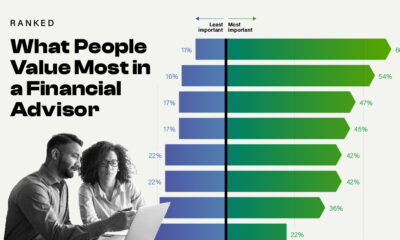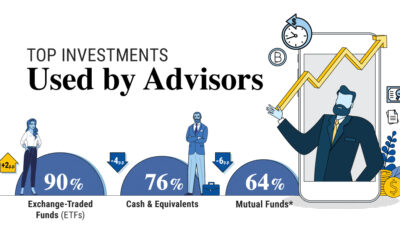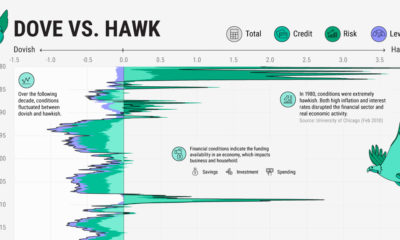This Markets in a Minute Chart is available as a poster.
U.S. Elections: Charting Patterns in Market Volatility
Do elections influence market volatility?
Over 90 years of data shows that volatility jumps 30% in the five months leading up to an election. But while elections have historically stoked uncertainty in the market, in reality, the scale of their impact plays a relatively minor role.
This Markets in a Minute chart from New York Life Investments shows volatility trends surrounding elections over the last century, and how investors can best position themselves amid market turbulence.
Making Sense of Market Volatility
Volatility is when a security has sharp price movements in either direction. The market’s volatility is measured by the CBOE Volatility Index (VIX), also known as the ‘fear gauge’ for the market. The higher the VIX reading, the higher the volatility.
The five-year average VIX value is 15.8, with an an all-time low of 9.1 in November 2017, and reaching an all-time high of 82.7 in March 2020. Specifically, in the five months ahead of U.S. elections, the VIX tends to fall between 14 and 18.
| Month | Average Monthly VIX During U.S. Election Years Since 1928 |
| July | 14.2 |
| August | 15.0 |
| September | 16.0 |
| October | 17.4 |
| November | 18.0 |
| December | 14.7 |
Source: Eureka Report
After the dust settles from elections, market volatility reduces as investors gain more clarity on government direction.

In short, in the six months following an election, volatility tends to fall on a downward sloping trajectory.
Finding Opportunity Surrounding U.S. Elections
With volatility here to stay, investors can utilize a number of portfolio strategies prior to elections.
- Stay the course: The easiest thing investors can do is nothing. Ignoring irrational market activity and staying invested will help you keep your investment goals on track.
- Focus on value: Investors can focus on companies with sound balance sheets that return value back to shareholders, such as fixed-income investments or dividend-paying stocks. For instance, when concerns circled around increased taxes on investment income in 2012, no less than 1,100 companies issued a special dividend following the election.
- Bargain hunt: Overvalued stocks, or sectors in the policy spotlight, can temporarily dip amid market fear. For example, in 2016 the health care sector saw new policies that investors feared would have damaging effects. Ultimately, these concerns were overdone, and the sector rallied after the election.
Focusing on solid company fundamentals can offer windows of opportunity to investors who look past the short-term volatility.
Long-Term Areas to Focus On
Investors can look to structural factors, such as the economic environment, that have a more powerful impact on financial markets.
Interest rates, low bond yields and policy measures, among others, have a greater influence on market performance. Rather than paying attention to short-term volatility, investors can also focus on policy changes that have a lasting impact on the economy:
- Employment: Economic policies that help to promote workforce outcomes will have positive impacts on earnings growth, market performance, and investor portfolios.
- Taxes: Tax policies reallocate capital. Corporate tax cuts, for instance, can buoy markets and investor optimism.
- COVID-19 containment: The policies in place in response to COVID-19, such as the CARES Act, will have a marked impact on investor sentiment, company earnings, and ultimately economic resilience.
Looking past the election, and keeping an eye on policy shifts, could provide more insight into key forces shaping the future of the economy.

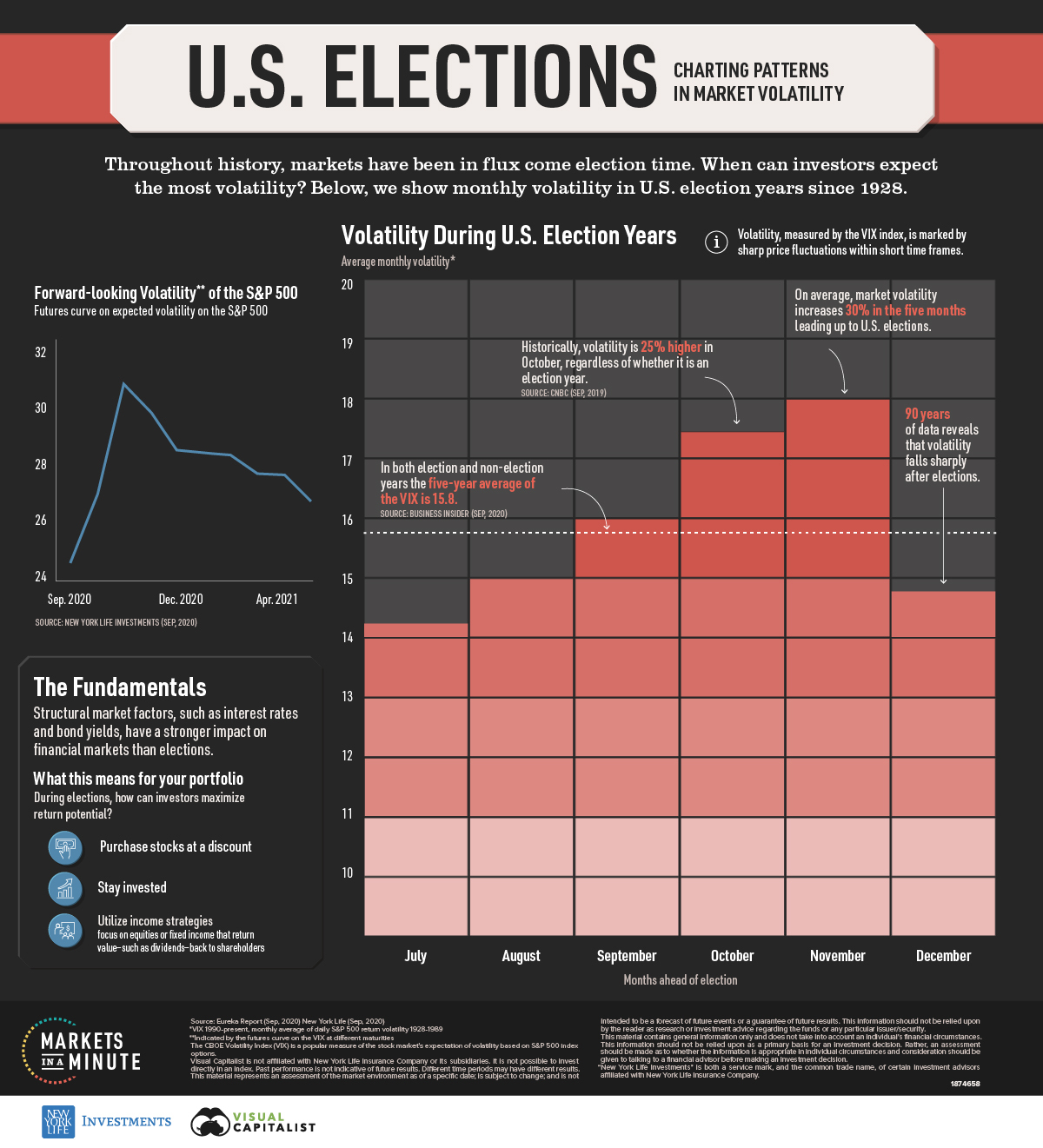
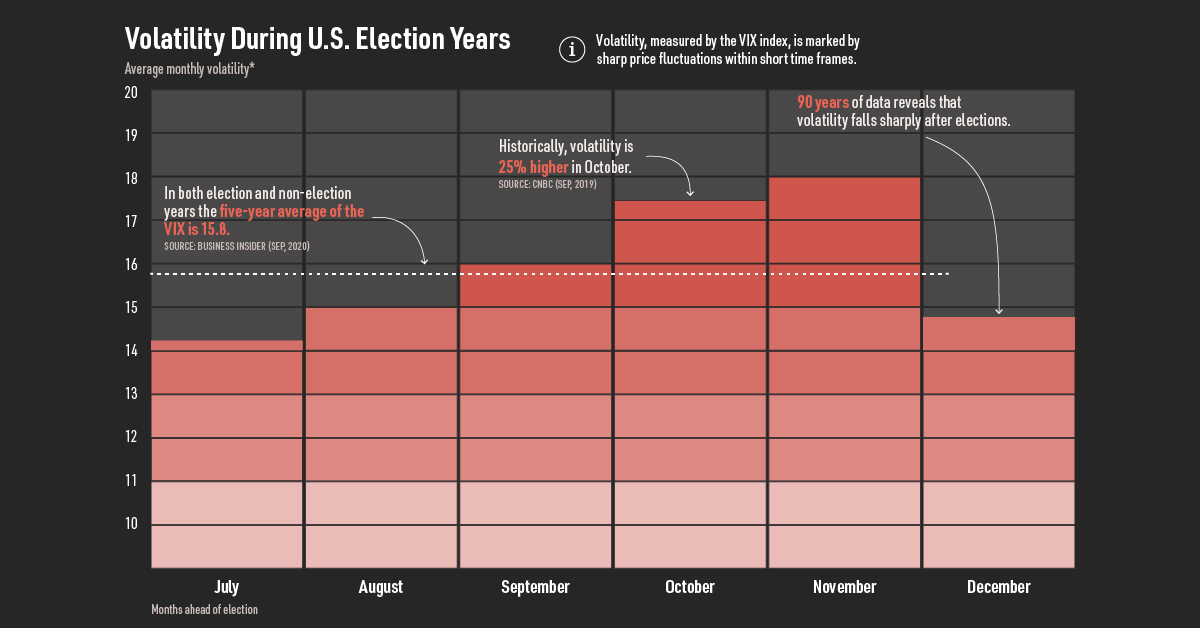

 Infographics2 years ago
Infographics2 years ago
 Markets in a Minute2 years ago
Markets in a Minute2 years ago
 Markets in a Minute2 years ago
Markets in a Minute2 years ago
 Infographics2 years ago
Infographics2 years ago
 Markets in a Minute1 year ago
Markets in a Minute1 year ago
 Infographics3 years ago
Infographics3 years ago
 Markets in a Minute2 years ago
Markets in a Minute2 years ago
 Infographics1 year ago
Infographics1 year ago




